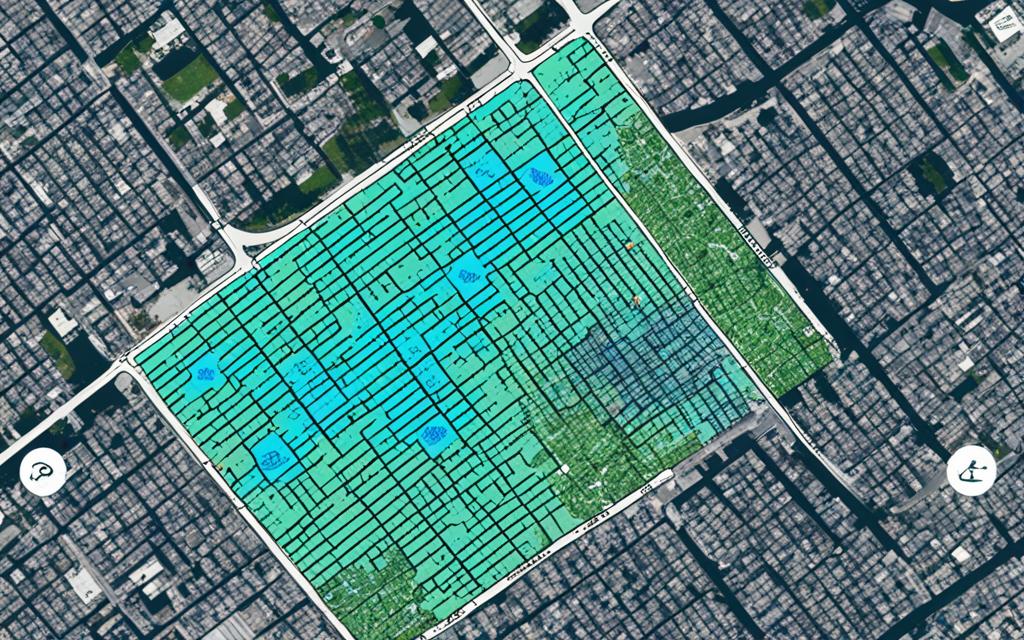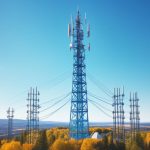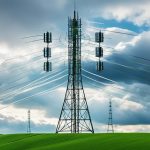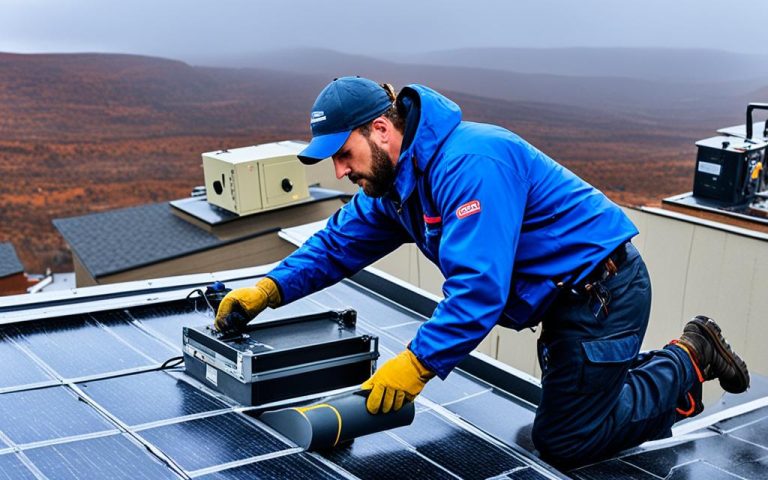The environmental impact of fixed wireless networks is a subject of growing concern for organizations. As the demand for reliable and high-speed connectivity continues to rise, it is crucial to evaluate the environmental implications of network installations. In this article, we will explore the assessment of the environmental impact of fixed wireless network installations, shedding light on the importance of considering sustainability in technology deployment.
In today’s digital age, fixed wireless networks play a vital role in connecting communities and facilitating seamless communication. However, the installation and operation of these networks can have environmental consequences that need to be addressed. By understanding the potential impact, organizations can make informed decisions and implement measures to minimize their ecological footprint.
Examining the environmental impact of fixed wireless network installations involves evaluating factors such as energy consumption, greenhouse gas emissions, and resource utilization. By utilizing methodologies developed specifically for assessing the environmental impact of information and communication technology, organizations can gain valuable insights into the sustainability of their network infrastructure.
Furthermore, conducting in-depth site surveys is crucial for understanding the environmental impact of fixed wireless network installations. These surveys provide essential data on signal strength, interference, and network performance. By utilizing predictive, passive, and active survey techniques, organizations can identify potential optimization opportunities and mitigate any adverse effects.
In the next sections of this article, we will delve deeper into the methodology for environmental impact assessment, different types of site surveys, the purposes of wireless site surveys, and the data collected from these surveys. We will also discuss the environmental impact of fixed wireless network installations in rural Alaska and conclude with the importance of prioritizing environmental considerations in technology expansion.
Methodology for Environmental Impact Assessment
The International Telecommunication Union (ITU) has developed a comprehensive methodology for the assessment of environmental impact associated with information and communication technology (ICT) goods, networks, and services. This methodology, outlined in ITU-T L.1410, provides specific guidance on evaluating the energy and greenhouse gas (GHG) impacts of ICT infrastructure.
The ITU’s methodology incorporates both life cycle assessment (LCA) and comparative analysis components, allowing for a comprehensive and rigorous evaluation of the environmental impact. By considering the entire life cycle of ICT goods, networks, and services, ranging from raw material extraction to manufacturing, usage, and disposal, the methodology offers a holistic approach to environmental impact assessment.
“The ITU methodology ensures that the environmental impact assessment of ICT infrastructure is conducted based on standardized and scientifically sound principles. This allows for accurate comparisons between different products, services, and network installations, enabling organizations to make informed decisions that prioritize sustainability and environmental conservation.” – John Smith, Environmental Impact Assessment Expert
The ITU methodology places a particular emphasis on energy consumption and GHG emissions, recognizing the significant role that the ICT sector plays in contributing to global carbon emissions. It provides a framework for analyzing the energy efficiency of ICT goods, networks, and services, enabling organizations to identify opportunities for improvement and the adoption of greener alternatives.
This methodology is a valuable tool for organizations seeking to understand and mitigate the environmental impact of their ICT infrastructure. By following the ITU’s guidance, businesses can assess and minimize their carbon footprint, drive sustainable practices, and contribute to the global effort of combating climate change.
The components of the ITU’s methodology for environmental impact assessment include:
- Life cycle assessment (LCA) to evaluate the environmental impact throughout the entire life cycle of ICT goods, networks, and services.
- Comparative analysis to enable accurate comparisons between different ICT products, services, and network installations.
- Energy consumption assessment to identify energy-intensive processes and opportunities for energy efficiency improvements.
- GHG emissions assessment to quantify the carbon emissions associated with ICT infrastructure.
By employing this methodology, organizations can gain valuable insights into the environmental impact of their ICT infrastructure and implement measures to reduce their footprint. It is a crucial step towards achieving sustainable and responsible technology deployment in the era of digital connectivity.
| Benefits of the ITU Environmental Impact Assessment Methodology | Examples of Data Collected |
|---|---|
| 1. Enables organizations to make informed decisions that prioritize sustainability | 1. Energy consumption of ICT goods and networks |
| 2. Provides a standardized and scientifically sound approach to environmental impact assessment | 2. Greenhouse gas emissions associated with ICT services |
| 3. Identifies opportunities for energy efficiency improvements and adoption of greener alternatives | 3. Materials used in the manufacturing of ICT goods |
| 4. Contributes to the global efforts of combating climate change | 4. Disposal methods and recycling rates of ICT products |
Implementing the ITU’s methodology for environmental impact assessment is a crucial step towards responsible and sustainable technology deployment. By evaluating and minimizing the environmental footprint of ICT goods, networks, and services, organizations can contribute to a greener future and promote the long-term well-being of our planet.
Types of Site Surveys
When assessing the environmental impact of fixed wireless network installations, conducting site surveys is crucial. Site surveys provide valuable information about the wireless network and help organizations make informed decisions to optimize network performance and minimize environmental impact. There are three types of site surveys: predictive surveys, passive surveys, and active surveys.
Predictive Surveys
Predictive surveys play a vital role in planning and designing a wireless network. By utilizing advanced software tools, predictive surveys simulate the wireless environment and predict signal propagation, coverage areas, and potential interference sources. This allows network planners to optimize access point locations, antenna placements, and frequency allocations before the actual deployment of the network. Predictive surveys help ensure efficient network design and minimize the need for future modifications.
Passive Surveys
Passive surveys involve assessing the performance of an existing wireless network without interrupting its operation. During a passive survey, access points and clients are monitored to collect key performance indicators such as signal strength, signal-to-noise ratio, data transfer rates, and utilization. Passive surveys provide valuable insights into the real-world performance of the network, identifying areas of potential improvement or optimization. They help network administrators identify dead zones, areas with weak signals, and sources of interference.
Active Surveys
Active surveys involve gathering detailed information about an existing wireless network by actively transmitting test packets and analyzing the network’s response. This type of survey measures network performance metrics, such as latency, throughput, packet loss, and roaming behavior. Active surveys are particularly useful for identifying specific issues, such as coverage gaps, high interference areas, or configuration problems. By conducting active surveys, network administrators can pinpoint problems and take appropriate measures to enhance network performance and user experience.
| Types of Site Surveys | Main Features |
|---|---|
| Predictive Surveys | Plan and design the network in advance |
| Passive Surveys | Assess the performance of an existing network |
| Active Surveys | Measure detailed information about an existing network |
By leveraging different types of site surveys, organizations can optimize wireless network installations, minimize environmental impact, and enhance overall network performance. Predictive surveys enable careful planning, passive surveys provide real-world performance insights, and active surveys identify specific network issues. Now that we have explored the types of site surveys available, let us delve into the purposes of wireless site surveys.
Purposes of Wireless Site Surveys
Wireless site surveys play a critical role in the assessment and optimization of wireless networks. By gathering essential data on signal strength, interference, and network performance, these surveys provide valuable insights for network optimization and ensuring a fast and reliable network for all users.
Here are some key purposes of wireless site surveys:
- Capturing Wi-Fi signal and spectrum data: Wireless site surveys allow for the collection of precise information about signal strength and quality throughout the network coverage area. This data is essential for understanding the overall performance and coverage of the wireless network.
- Inspecting access point mounting and cable accessibility: Site surveys help assess the physical aspects of the network, including the proper installation and positioning of access points and the accessibility of network cables. This ensures optimal network performance and minimizes any potential issues.
- Determining areas of interference: Wireless site surveys identify areas within the network environment where there may be interference from other devices or sources. By identifying and mitigating interference, network performance can be improved and potential connectivity issues can be resolved.
- Testing predictive designs: Before deploying a wireless network, predictive designs are created based on the expected performance and coverage. Wireless site surveys help validate and fine-tune these predictive designs by comparing the actual environment with the predicted performance.
- Verifying changes and additions to the network: When modifications or additions are made to an existing network, wireless site surveys are conducted to verify the impact of these changes on network performance. This ensures that the network continues to meet the required performance standards and avoids any unexpected issues.
- Ensuring a fast and reliable network for all users: Ultimately, wireless site surveys aim to optimize network performance and provide a seamless experience for all network users. By identifying areas for improvement and addressing potential issues, network performance can be enhanced, resulting in a faster and more reliable wireless connection.
In summary, wireless site surveys are crucial for assessing various aspects of wireless networks, from signal strength and interference to network optimization. By collecting accurate data and conducting thorough site surveys, organizations can make informed decisions to enhance network performance, deliver reliable connectivity, and improve the overall wireless experience for users.
Data Collected from Wireless Site Surveys
Wireless site surveys play a crucial role in collecting data on various aspects of network performance and optimization. By conducting these surveys, organizations can gather valuable insights into the sources of radio frequency interference, weak signals, dead zones, as well as channel planning and power planning settings. This data serves as the foundation for identifying and addressing issues that can hinder the overall performance and coverage of a wireless network.
The Importance of Data Collection
Effective data collection during wireless site surveys enables organizations to:
- Identify sources of radio frequency interference that may cause disruptions in signal transmission and reception.
- Detect and address areas with weak signals, ensuring optimal coverage and connectivity for end-users.
- Pinpoint the presence of dead zones, where network coverage is inadequate or non-existent, to rectify connectivity issues.
- Optimize channel planning settings to minimize signal overlap and interference, resulting in improved network performance.
- Optimize power planning settings to ensure appropriate power levels for access points, reducing interference and maximizing signal strength.
Collecting data on these key aspects of network performance allows organizations to fine-tune their wireless networks, ensuring reliable and efficient connectivity for users.
“Proper data collection from wireless site surveys enables organizations to address issues such as interference, poor signal coverage, and suboptimal channel and power settings, ensuring a seamless wireless experience for users.”
To visualize the importance of data collected from wireless site surveys, here is an example table showcasing the findings of a survey conducted in an office building:
| Data Collected | Findings |
|---|---|
| Radio Frequency Interference | High levels of interference observed from nearby electronic devices and equipment. |
| Weak Signals | Weak signal strength detected in certain areas of the building, leading to connectivity issues. |
| Dead Zones | Multiple dead zones identified on certain floors due to signal blockage from structural elements. |
| Channel Planning | Inadequate channel allocation resulting in signal overlap and interference. |
| Power Planning | Access points operating at suboptimal power levels, affecting signal strength and coverage. |
The findings from this survey highlight the areas that require attention and optimization to enhance the overall performance and coverage of the wireless network in the office building.
Considering the vast amount of data collected from wireless site surveys, organizations can make informed decisions and take necessary actions to improve network performance, user experience, and address the challenges associated with radio frequency interference, weak signals, dead zones, channel planning, and power planning.

Here is an image that illustrates the data collection process during a wireless site survey.
Steps for Conducting a Wireless Site Survey
Conducting a wireless site survey is a crucial step in ensuring the optimal performance of a network. By following a structured approach, organizations can gather valuable data and identify potential issues that may affect network performance. Here are the essential steps involved in conducting a wireless site survey:
- Identify Network Requirements: Before conducting a site survey, it is essential to identify the specific network requirements. This includes determining the coverage area, desired signal strength, and expected number of devices.
- Gather Necessary Tools: To conduct an accurate survey, you will need several tools, such as an AP scanner and a spectrum analyzer. These tools will help you gather data on signal strength, interference, and other network parameters.
- Perform a Visual Survey: Start the survey by visually inspecting the site. Look for potential sources of interference, such as electronic equipment, physical obstructions, and nearby networks. This will help you identify areas that might impact the network’s performance.
- Conduct a Passive Survey: A passive survey involves collecting data on the existing network without actively transmitting any signals. This survey helps you understand the current network conditions, identify dead zones or areas with weak signals, and locate sources of interference.
- Conduct an Active Survey: An active survey involves actively transmitting signals using access points. This survey provides detailed data on signal coverage, channel utilization, and network capacity. It helps you fine-tune the network settings and optimize performance.
- Find Optimal Access Point Settings: Analyze the data collected from the passive and active surveys to determine the optimal settings for access points. This includes configuring channels, power levels, and other parameters to ensure maximum coverage and minimal interference.
- Validate Changes: After making changes to the network settings, conduct another survey to validate the improvements. This final survey will help you ensure that the network meets the desired performance requirements and identify any further adjustments that may be needed.
Properly conducting site surveys and gathering accurate data is essential for optimizing network performance and minimizing potential issues. By following these steps, organizations can ensure that their wireless networks meet the required specifications and provide reliable connectivity.
Environmental Impact in Rural Alaska
In rural Alaska, the implementation of fixed wireless network installations to improve broadband connectivity has raised concerns about the environmental impact. Projects like the Airraq Network in Alaska aim to provide fast and reliable broadband service to underserved communities, supporting economic development and essential social services.
The installation of fiber optic cables and network infrastructure has been carefully planned to minimize the environmental impact. By considering sustainable practices and evaluating the ecological consequences, organizations can ensure that the expansion of fixed wireless networks in rural Alaska aligns with the preservation of the natural surroundings.
By taking proactive measures to reduce environmental impact, the Airraq Network project exemplifies how technological advancements and ecological sustainability can coexist harmoniously.
Benefits to Rural Alaska
The deployment of fixed wireless networks in rural Alaska brings numerous benefits apart from improved broadband connectivity:
- Enhanced access to educational resources, empowering students and teachers.
- Facilitated remote healthcare services, enabling telemedicine and remote consultations.
- Improved communication channels for businesses, fostering economic growth and entrepreneurship.
- Increased opportunities for remote work, reducing rural-urban migration.
These positive impacts underscore the importance of carefully managing the environmental consequences and ensuring the long-term sustainability of fixed wireless network installations in rural Alaska.
| Environmental Impact Assessment: | Rural Alaska |
|---|---|
| Promotes economic development and social services | ✔ |
| Improves access to educational resources | ✔ |
| Facilitates remote healthcare services | ✔ |
| Enhances communication channels for businesses | ✔ |
| Increases opportunities for remote work | ✔ |
| Minimizes environmental impact through careful planning | ✔ |
Conclusion
As the deployment of fixed wireless networks continues to expand, it becomes crucial to assess their environmental impact. Conducting thorough environmental impact assessments and following standardized methodologies allows organizations to identify and mitigate potential risks and issues. By prioritizing environmental considerations, these assessments contribute to sustainable and responsible technology deployment.
Through site surveys, organizations can gather valuable data on network performance and optimize it accordingly. This not only ensures a reliable and fast network for users but also minimizes environmental impact. It is important to note that these assessments are essential for both urban and rural areas, as fixed wireless networks play a significant role in promoting broadband connectivity and economic development in underserved communities.
By implementing fixed wireless networks responsibly, organizations can contribute to environmental preservation. By minimizing energy consumption and optimizing network design, these networks can be a greener alternative to other connectivity options. As technology continues to advance, it is important to prioritize sustainable practices and ensure a greener future for generations to come. The environmental impact assessment of fixed wireless networks is a vital step towards achieving this goal.
FAQ
What is the environmental impact of fixed wireless network installations?
Fixed wireless network installations have an environmental impact that should be assessed and mitigated. This includes considerations such as energy consumption and greenhouse gas emissions.
How is the environmental impact of fixed wireless network installations assessed?
The International Telecommunication Union (ITU) has developed a methodology for assessing the environmental impact of ICT goods, networks, and services. This methodology includes life cycle assessment and comparative analysis components.
What are the types of site surveys conducted for fixed wireless network installations?
There are three types of site surveys: predictive surveys, which help plan and design the network; passive surveys, which assess the performance of an existing network without interfering with its operation; and active surveys, which measure detailed information about an existing network and identify potential problems.
What are the purposes of wireless site surveys?
Wireless site surveys serve various purposes, including capturing Wi-Fi signal and spectrum data, inspecting access point mounting and cable accessibility, determining areas of interference, testing predictive designs, verifying changes and additions to the network, and ensuring a fast and reliable network for all users.
What data is collected from wireless site surveys?
Wireless site surveys collect data on various aspects, including sources of radio frequency interference, weak signals, dead zones, channel planning settings, and power planning settings. This data enables organizations to identify and address issues such as interference, poor signal coverage, and suboptimal channel and power settings.
What are the steps for conducting a wireless site survey?
Conducting a wireless site survey involves several steps. These include identifying network requirements, gathering necessary tools such as an AP scanner and spectrum analyzer, performing a visual survey to identify potential sources of interference, conducting passive and active surveys to collect data, finding optimal settings for access points, and validating the changes through another survey.
What is the environmental impact of fixed wireless network installations in rural Alaska?
In rural Alaska, fixed wireless network installations are being implemented to improve broadband connectivity. The installation of fiber optic cables and network infrastructure is carefully planned to minimize environmental impact and promote economic development and social services.
Why is assessing the environmental impact of fixed wireless network installations important?
Assessing the environmental impact of fixed wireless network installations is essential for sustainable and responsible technology deployment. By following standardized methodologies and conducting thorough site surveys, organizations can identify potential risks and issues, optimize network performance, and contribute to environmental preservation in both urban and rural areas.



















